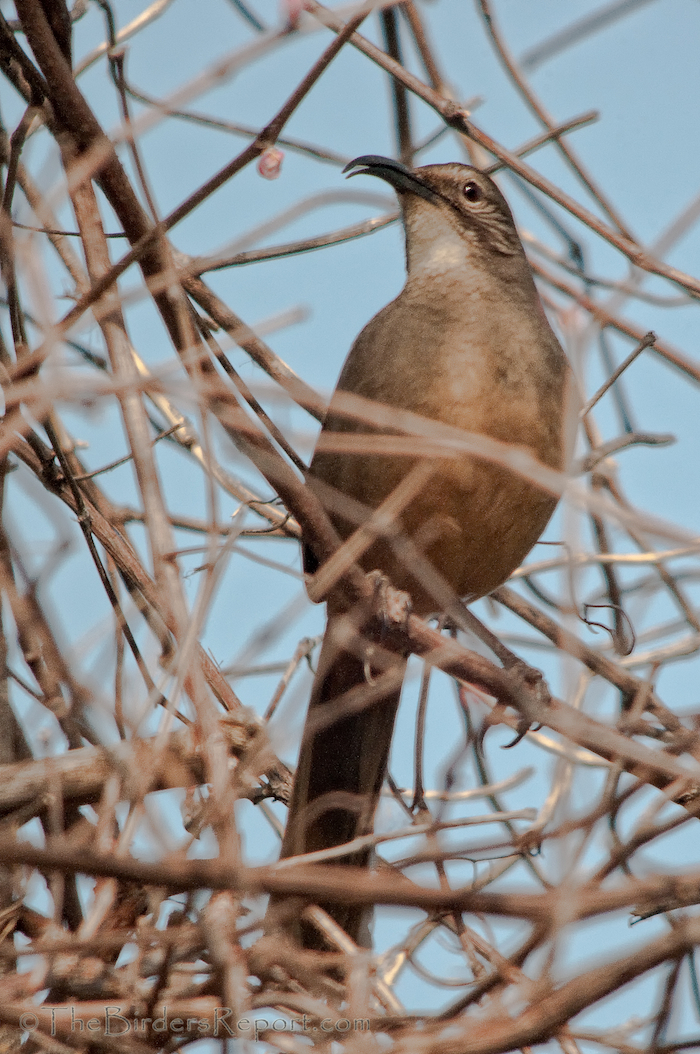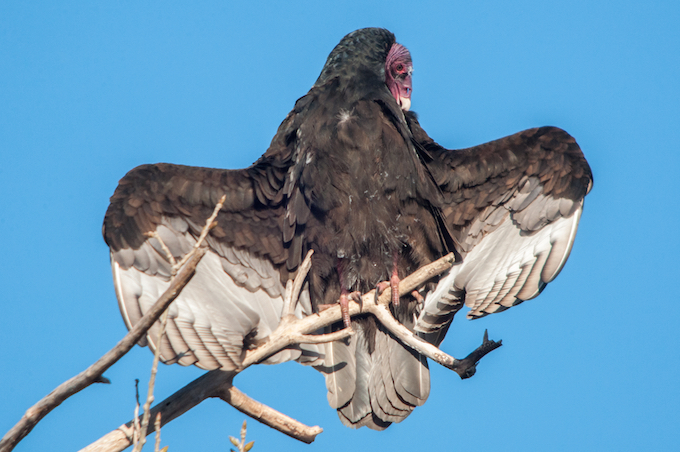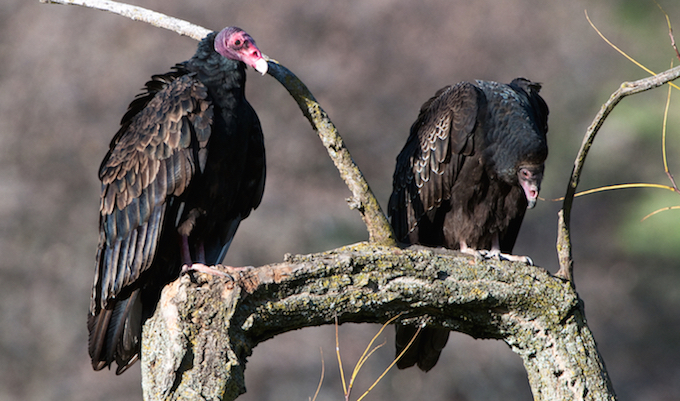
Yellow Warblers surge down local riversides in September feeding on abundant insects from streamside vegetation
Salmon will be arriving soon, and the birds will know it. Turkey vultures know the smells, and will congregate in bare trees at fish-rich creeksites. Experienced eagles will displace the vultures at sand-spit carcasses. Mergansers and cormorants will swallow salmon fragments in the water. Herons and egrets will ply the shorelines where carcasses wash up. Sandpipers may join them. Insects will quickly colonize the dead fish, and their swarming hordes will feed the thrushes, warblers, and flycatchers who come to share in the salmon bounty.
The fall run of Chinook salmon to north state rivers and creeks delivers a huge, valuable load of Pacific Ocean protein and calories that benefit a wide range of wildlife—bears, foxes, otters, fishers, raccoons, skunks, coyotes, bobcats, and a variety of insects that in turn feed more mammals, reptiles, amphibians, and fish. For many birds, the salmon calories are especially important.
Birds that migrate long distances can as much as double their weight in preparation for the trip. In the weeks before flight, they go into hyperphagia, a profound over-eating binge that can see their weight increase as much as 10% per day. They store the energy as fat, which concentrates their necessary fuel in a form lighter than carbohydrates or muscle. The birds then burn this fuel in flight, arriving at their wintering grounds once again slim and hungry.
Of local birds that eat salmon, perhaps the most fish tonnage goes into turkey vultures. Some vultures spend winters in the north state, but most still migrate to Mexico or throughout South America, up to 6000 miles from Redding. Even soaring most of the way, as vultures do, the calorie requirement is high.
Smaller birds cannot soar their way south, but must flap almost nonstop. For numerous songbirds, riversides are highways full of calories. Right now they are hungrily devouring insects, from salmon, from oak trees, from cottonwoods; they are not particular. In addition to insects many songbirds devour the grapes, blackberries, and pokeberries scattered along autumn shorelines. Thrushes, waxwings, tanagers, orioles, vireos, and flycatchers all wolf down this wealth of food to enable their flights south.
Some of our most numerous gems flocking downriver right now are yellow warblers. Relying on insects, they are swarming through Shasta County streamside woodlands, bulking up their little third-of-an-ounce bodies for a flight of two to three thousand miles. They are on the move, and may appear just as flashes of yellow through the pale September foliage, but scores of them can sometimes be seen in a brief streamside stroll.
Fortunately our departing birds do not exhaust the food supplies. Many birds that summered in Canada’s prairies or forests, or in the high arctic will soon flock hungrily into Shasta County, and they should find plenty to eat. Ducks and gulls will feed on salmon that still wash to the riverbanks. Robins and hermit thrushes will eat grapes hanging high in cottonwood trees. Little bushtits, who nested here, will now stay the winter, finding sustenance in the insect larvae and eggs tucked into crevices of leaves and twigs. The bounty of autumn rivers keeps on giving.




